Smithsonian National Zoological Park, Washington, DC (2007)
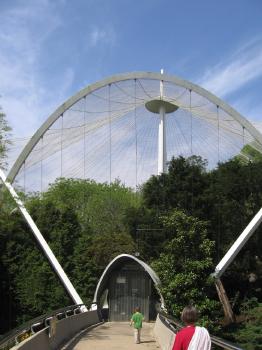
The Smithsonian’s National Zoo Bird House (map) hosts many avian species, either within the building, the large flight cage or in the attached outdoor exhibits. This is one of the quietest parts of the zoo, a bit off the beaten track, and visitors have to really make a determined effort to find it.
We approached the flight cage from a second-story walkway leading from the Bird House. Two sets of doors enclosed an entryway that in turn was lined with clear plastic strips suspended from the ceiling to keep birds inside while allowing people to enter.
Birds in this giant cage freely foraged through leaves and brush, swam in small waterways, and flew breathlessly through their surroundings. The short trail included a waterfowl alcove with a refreshing pool at its base. Another trail curved upward and ended at the back of the structure where a second entrance once existed, now closed.
Temminck’s Tragopan
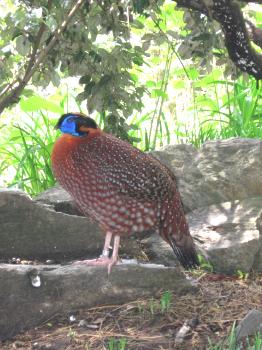
The first thing to realize is that I’m not a birder. I have great respect if that’s your thing but you’ll probably want to check a different website if that’s the case. I took these photos because I liked the way the birds looked, and for not much more reason than that.
This colorful male Temminck’s Tragopan pecked under and among bushes in the flight cage. This is a variety of pheasant found in areas of India, China, Myanmar and Vietnam, where it forages through the forests in search of edible vegetation and insects.
That’s exactly what this fellow was doing during our visit, and he paid no attention while I got closer to take his picture. I found the blue coloring on his face particularly striking along with the orange feathers along his breast. The species is named for a 19th Century Dutch ornithologist, Coenraad Temminck, and it’s apparently doing pretty well in the wild although there are general concerns for habitat loss.
Double-crested Cormorant
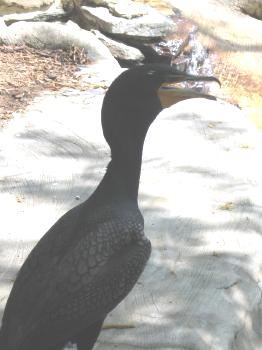
This magnificent Double-crested Cormorant was another bird that shared space in the flight cage. This is a fish-eating species found commonly throughout North America both inland and along the coast, wherever there is water. This is a slender but fairly tall bird.
The specimen in the flight cage was probably about two and a half feet tall. It had a really interesting beak with lots of yellow coloring and a hook at the end. It sat on a rock outcropping at the very top of the exhibit trail, next to a waterfall that plunged into a pool below.
Flamingo
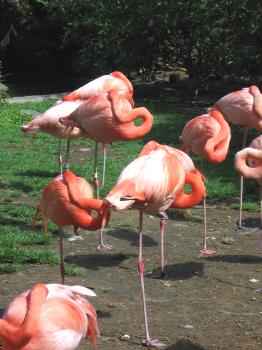
Of course, Flamingos are commonly found at every zoo imaginable but I still have a fascination with these guys. This group slept the morning away while standing on one leg in their characteristic manner, in an outdoor exhibit next to the Bird House.
In the wild they are found all over Florida and the Caribbean where they wade through brackish or salty water in search of crustaceans and other wiggly creatures. They would have a pretty tough time in a Washington winter so I suppose the zookeepers must have room for them indoors somewhere. However, that wasn’t a concern on this warm, sunny day.
Double-wattled Cassowary
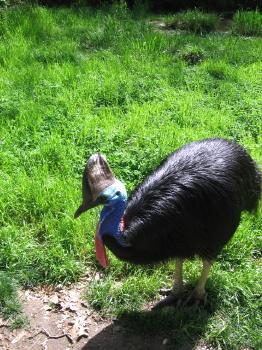
This odd avian creature is a Double-wattled Cassowary from New Guinea and northeastern Australia, but in this case it inhabited an outdoor pen at the National Zoo’s bird house.
This is a substantially-sized bird. According to the exhibit these cassowaries can run up to 35 miles per hour, jump five feet high, and even swim. However they can’t fly. They forage through humid forests in search of fruits, insects and other small foodstuffs. Indigenous Papuan people of New Guinea use its feathers to decorate headdresses and quills to adorn their noses.

Leave a Reply